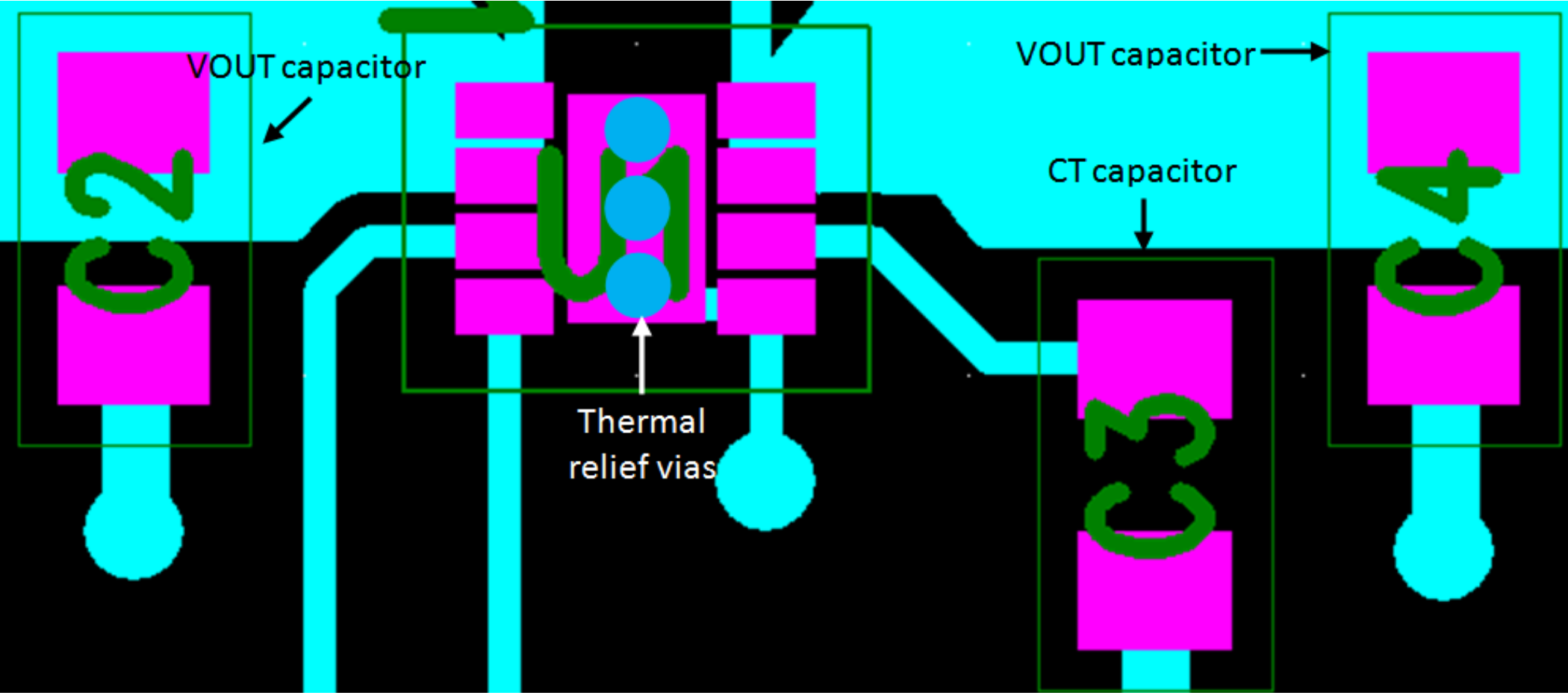SLVSC42A August 2013 – April 2015 TPS22967
PRODUCTION DATA.
- 1 Features
- 2 Applications
- 3 Description
- 4 Typical Application Schematic
- 5 Revision History
- 6 Pin Configuration and Functions
- 7 Specifications
- 8 Detailed Description
- 9 Application and Implementation
- 10Power Supply Recommendations
- 11Layout
- 12Device and Documentation Support
- 13Mechanical, Packaging, and Orderable Information
Package Options
Mechanical Data (Package|Pins)
- DSG|8
Thermal pad, mechanical data (Package|Pins)
- DSG|8
Orderable Information
11 Layout
11.1 Layout Guidelines
For best performance, all traces must be as short as possible. To be most effective, the input and output capacitors must be placed close to the device to minimize the effects that parasitic trace inductances may have on normal operation. Using wide traces for VIN, VOUT, and GND helps minimize the parasitic electrical effects along with minimizing the case to ambient thermal impedance.
The maximum IC junction temperature must be restricted to 125°C under normal operating conditions. To calculate the maximum allowable dissipation, PD(max) for a given output current and ambient temperature, use Equation 5 as a guideline:

where
- PD(max) = maximum allowable power dissipation.
- TJ(max) = maximum allowable junction temperature (125°C for the TPS22967).
- TA = ambient temperature of the device.
- ΘJA = junction to air thermal impedance. See Thermal Information. This parameter is highly dependent upon board layout.
Figure 36 shows an example of a layout. Notice the thermal vias under the exposed thermal pad of the device. This allows for thermal diffusion away from the device.
11.2 Layout Example
 Figure 36. Layout Example
Figure 36. Layout Example